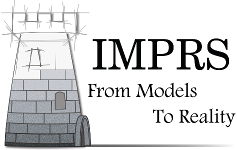Speaker
Description
Understanding how adsorbates bind to and behave on metal substrates is crucial for advancements in heterogenous catalysis. Ultrashort laser pulses open up new ways to investigate such systems and may also allow for future applications (so-called femtochemistry).
We employ two potential energy surfaces, that were recently developed for the well-known model systems CO on Ru(0001) and CO on Cu(100), to simulate hot-electron driven dynamics induced by femtosecond-laser irradiation. The potentials account for all six molecular degrees of freedom and via the Generalized Langevin Oscillator (GLO) model, surface phonons are included as well. The coupling of the molecule to electron-hole pairs is included by a quasiclassical Langevin approach using electronic friction coefficients derived from the Local Density Friction Approximation (LDFA). The action of ultrashort laser pulses enters through a substrate-mediated, hot-electron mechanism via a time-dependent electronic temperature (derived from a Two-Temperature Model (2TM)), and random forces acting on the molecule.
The model is applied to laser-induced lateral diffusion of CO on the surfaces, ``hot adsorbate'' formation, and laser-induced desorption. Furthermore, for CO on Cu a vibrational analysis was performed to compare with recent time-resolved Sum Frequency Generation (SFG) experiments.
Our effectively parameter-free simulations allow for good statistics and treatment of long-time dynamics, giving generally good agreement with experimental data where available and detailed mechanistic insight in addition. A recently proposed laser-induced population of physisorbed precursor states for CO on Ru could not be observed with the present low-coverage model.

